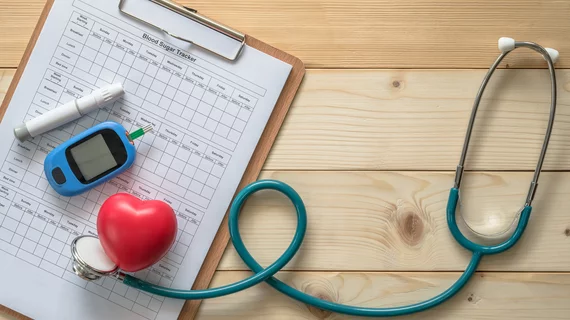Advances in diabetes care over the past decade haven’t translated into better patient outcomes, researchers at Massachusetts General Hospital have found, with just one in four U.S. adults with the disease meeting treatment goals between 2005 and 2016.
The study, led by MGH and Harvard Medical School professor Pooyan Kazemian, PhD, and published August 12 in JAMA Internal Medicine, also found that notable gaps in diabetes care—particularly among younger adults, women and minorities—have persisted over the years. The researchers drew data on 1,742 U.S. adults with diagnosed diabetes from the 2005-2016 National Health and Nutrition Examination Survey, evaluating whether the “cascade of diabetes care” improved during the study period.
Kazemian and his team defined the cascade of care as the composite of a diabetes diagnosis, linkage to care and achievement of individual and combined treatment targets. Those targets included glycemic control (hemoglobin A1c levels of less than 7% or 8.5%, depending on the patient’s age and complications), keeping blood pressure and cholesterol levels in check (BP of less than 140/90 mmHg, LDL-C of less than 100 mg/dL) and abstaining from smoking.
Of their study pool, Kazemian et al. said 64% of patients met their hemoglobin target, 70% met their optimum BP level, 57% hit their cholesterol targets and 85% were nonsmokers. Twenty-three percent achieved the composite goal.
The authors reported little change in achievement of the composite goal during the study period—23% of patients reached the target in 2005-2008 and 25% reached the target in 2009-2012. Compared with middle-aged adults with diagnosed diabetes, patients 65 years old and up were more likely to meet the composite target, as were younger adults (18-44 years old), women, and non-Hispanic black and non-Hispanic white individuals.
“Barriers accessing healthcare, including lack of health insurance and high drug costs, remain major factors that have not been adequately addressed on a population level,” senior author Deborah J. Wexler, MD, MSc, of the MGH Diabetes Unit, said in a release.
She said her team found that having health insurance was the strongest predictor of linkage to diabetes care.
“Treatment advances in diabetes mellitus can meaningfully improve outcomes only if they effectively reach the populations at risk,” she said. “Our findings suggest this is not the case in the U.S. and indicate an immediate need for better approaches to diabetes care delivery including a continued focus on reaching underserved populations with persistent disparities in care.”

